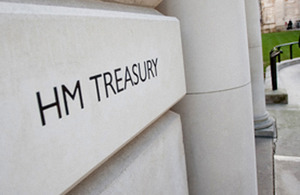Sovereign Grant recalculated as offshore wind profits rise
The Royal Trustees have today (20 July) published their review of the Sovereign Grant which sets the proportion of The Crown Estate’s net profits used to calculate the amount of government funding to support His Majesty The King.

- Sovereign Grant to be 12% of The Crown Estates net profits next year, down from 25%
- Change comes following a significant increase in Crown Estate’s profits from offshore wind
- As a result, the Royal Household’s budget will be £24 million lower next year and £130 million lower in both 2025 and 2026, than if the rate remained at 25%
The Trustees – made up of the Prime Minister Rishi Sunak, Chancellor Jeremy Hunt and the Keeper of the Privy Purse Sir Michael Stevens - have reduced the proportion of Crown Estate profits used to calculate the Sovereign Grant from 25 per cent to 12 per cent for 2024-25 onwards, reflecting a significant increase in Crown Estate Profits from offshore wind developments.
Cutting the rate to 12% is expected to reduce the Sovereign Grant by £24 million in 2024/25, compared with the rate staying at 25%, and over £130 million lower in each of 2025 and 2026. This money will instead be used to fund vital public services, for the benefit of the nation.
This means the total Sovereign Grant for 2024/25 will remain flat at £86.3 million, with part of the Grant going towards the Reservicing of Buckingham Palace – works that seek to prevent a serious risk of fire, flood, and damage to the building.
Chancellor of the Exchequer Jeremy Hunt said:
Our Monarchy is a source of immense national pride and constitutional strength, widely admired around the world.
For almost 300 years, Kings and Queens have surrendered the profits from The Crown Estate to the British people, and in return the Government has provided a fraction of that to properly support the King in undertaking his official duties.
The new Sovereign Grant rate reflects the unexpected significant increase in The Crown Estate’s net profits from offshore wind developments, while providing enough funding for official business as well as essential property maintenance, including completing the ten year reservicing of Buckingham Palace.
The review took into account the Royal Household’s current income and expenditure, the level of the Sovereign Grant Reserve, and the costs of major projects to be carried out.
The new 12 per cent rate will deliver the remaining funding for the 10-year reservicing of Buckingham Palace, due to complete in 2027, as well as funding for wider property maintenance and to support the official duties of The Head of State.
It will come into effect once legislation changing the rate has passed in the Autumn, and be used in the calculation of the Grant for 2024-25 onwards until the completion of the Reservicing Programme in 2027. Following the completion of the Reservicing Programme, the Sovereign Grant will be recalculated.
Since 2020, the Grant has been largely unchanged due to the adverse impact of Covid-19 on The Crown Estate’s profits. The total Sovereign Grant for 2022-23 is £86.3 million, as confirmed in The Annual Report of the Royal Trustees, published in March.
The Crown Estate is a public corporation run independently of both the King and the government, tasked with managing a portfolio of land and property that belongs to the Sovereign.
Further information
- Read the The Report of the Royal Trustees on the Sovereign Grant Review 2023
- The Crown Estate’s profits are paid into the Consolidated Fund, from which the government funds public spending.
-
The Grant is paid from the Consolidated Fund based on how much revenue is generated by The Crown Estate two years previously. When Crown Estate profits fall, the Grant cannot be set lower than the previous year’s level.
- Since 1760, each Monarch has surrendered the revenue from the Crown Estate to the Exchequer in return for government support